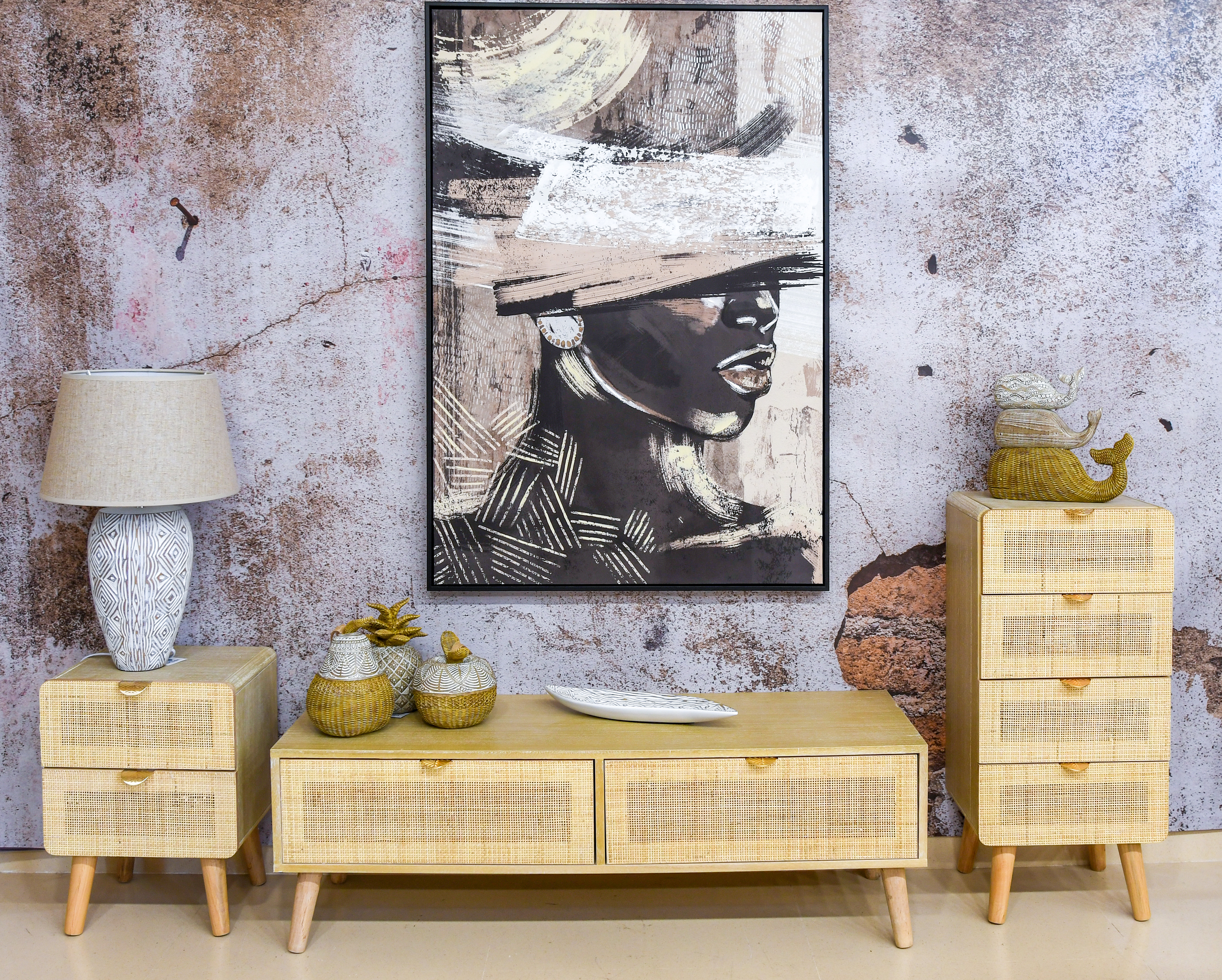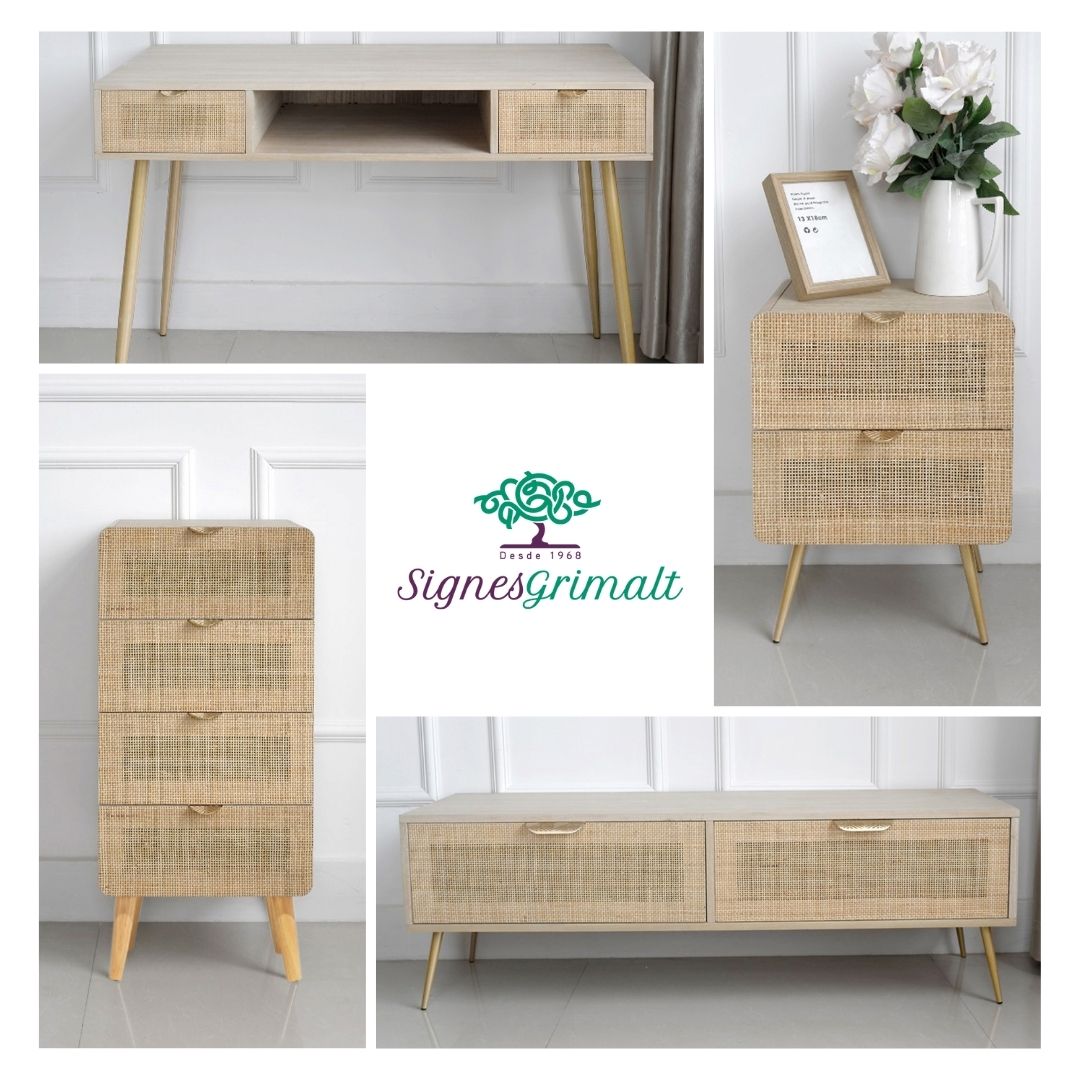Rattan furniture
What is rattan?
Rattan is a type of cane that comes from rattan, native to Southeast Asia, South America and parts of Africa. Due to the ease with which these reeds are split and interwoven, they are easy to work with in the manufacture of various types of furniture and decorative objects.
These plants are of a climbing variety, with stems reaching up to 400 metres in length. These stems are similar to bamboo with the same characteristics of strength and flexibility, with the difference that bamboo is hollow inside and rattan is not.
Rattan comes from a very ancient craft of plaiting, originally used to make objects for everyday use: plates, bowls, salad bowls, cutlery, etc. And later it was used for the manufacture of furniture up to the present day.
Benefits of natural rattan in furniture
The main characteristic of this natural fibre material is its resistance, like bamboo it can support many kilos without breaking, and also its capacity to resist the sun and humidity. Although for a good longevity especially in furniture made of these materials, it is recommended to put a cover on them and if possible, store them in a dry place during the rainy and cold months (if we are not going to use them).
Thanks to the great variety of existing palm trees, the rattan stems can be of very different colours, going from "light natural" to "dark brown". This means that we have a large catalogue of natural colours to find the best combination with our style. In addition, the stems can also be dyed or varnished.
In summary, the main benefits of rattan are:
- It is an ecological material
- 100% sustainable
- It creates a natural atmosphere
- Available in various colours and shapes
- Resistant to outdoor conditions
- Great variety of objects and furniture that can be combined with each other


